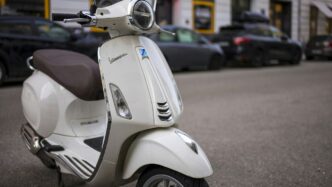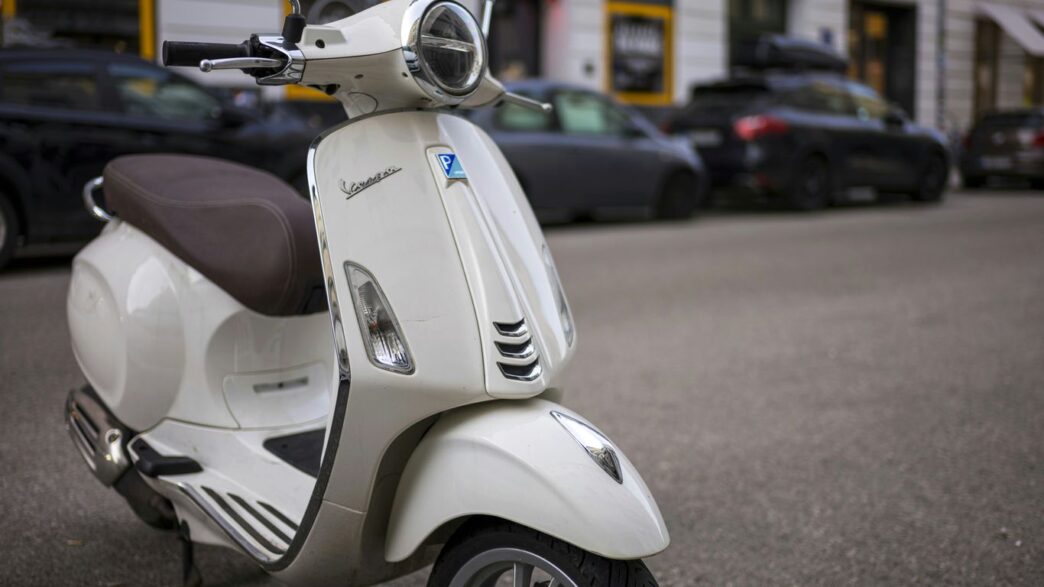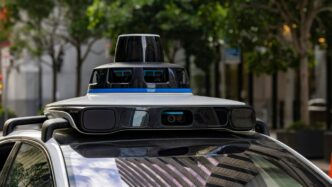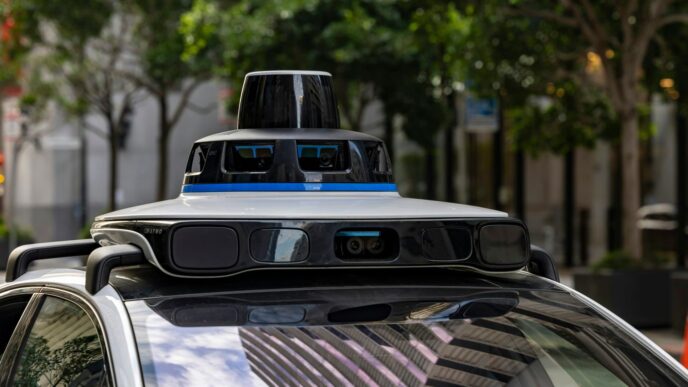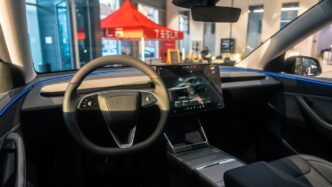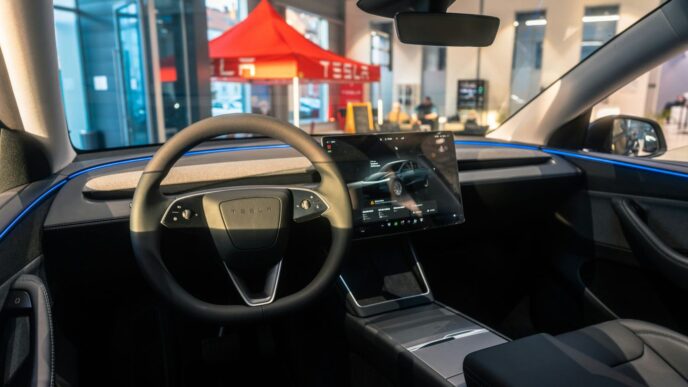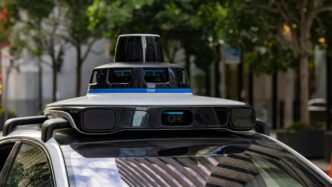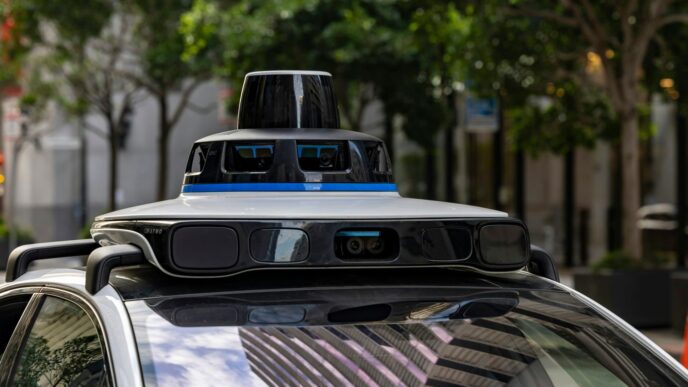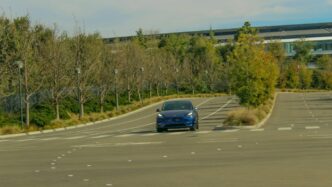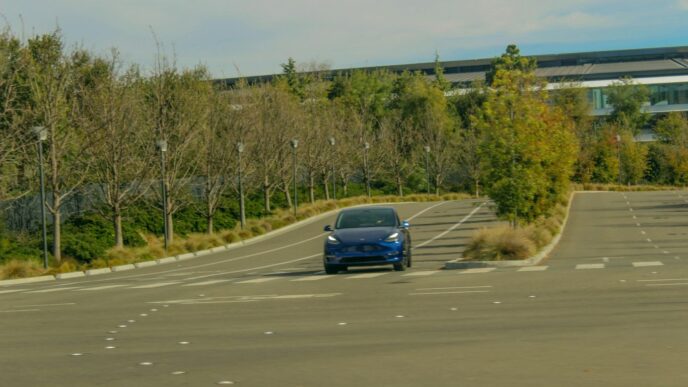The Evolution of Launch Mobility
It feels like just yesterday we were all about owning our cars, right? But things are changing, and fast. We’re seeing a big shift in how people think about getting around, especially when it comes to fleets. It’s not just about owning a vehicle anymore; it’s about having access to transportation when and how you need it.
Shared Mobility’s Growing Traction
Think about it – ride-sharing apps have become super common. Millions of trips are booked daily, showing just how much people are embracing the idea of sharing rides. This isn’t just a fad; it’s a fundamental change. We’re moving towards a world where using a service to get from point A to point B is more appealing than the hassle of owning and maintaining a vehicle. This trend is only going to get bigger as more services pop up, offering everything from e-bikes to on-demand buses.
The Rise of On-Demand Transportation
This ties right into the last point. The expectation for services to be available instantly is huge. Whether it’s hailing a ride or summoning a bus, people want it now. This on-demand culture is reshaping transportation. We’re seeing trials of autonomous buses and services that let you book a ride locally, making getting around much more flexible and convenient. It’s all about making transportation fit our lives, not the other way around.
Consumer Shift Towards Service Over Ownership
So, what’s driving all this? A big part of it is a change in mindset. People are realizing that owning a car comes with a lot of costs and responsibilities – insurance, maintenance, parking, you name it. For many, especially in urban areas, it just makes more sense to pay for a service when they need it. This shift is pushing companies to rethink their fleets and offer more flexible, service-based solutions. It’s a move towards a more efficient and less resource-intensive way of managing mobility.
AI-Powered Fleet Management
Transforming Data into Actionable Insights
Think about all the information a single vehicle spits out while it’s just driving around. Location, speed, how hard the brakes are hit, engine temperature – it’s a ton of data. For a whole fleet, that’s a mountain of information. AI is the tool that helps us make sense of it all. Instead of just looking at reports after the fact, AI can spot patterns in real-time. It can tell you if a certain route is consistently causing drivers to brake hard, or if a group of vehicles is using more fuel than usual. This ability to turn raw data into clear, useful information is changing how we manage fleets. It means we can make smarter choices, faster, about routes, driver training, and even vehicle assignments. It’s like having a super-smart assistant who sees everything and points out what needs attention before it becomes a bigger problem.
Predictive Maintenance for Reduced Downtime
Nobody likes when a vehicle breaks down unexpectedly. It costs money, delays deliveries, and frustrates everyone. AI is making a big difference here by shifting us from fixing things when they break to fixing them before they break. By looking at data from sensors – things like how often the brakes are used, the temperature of the engine, or even vibrations – AI can predict when a part might be about to fail. For example, if a batch of trucks operating in a busy city consistently shows signs of battery wear after a certain mileage, AI can flag them for a check-up or replacement. This means you can schedule maintenance during off-hours, order parts ahead of time, and keep your vehicles on the road where they belong. It’s about keeping things running smoothly and avoiding those costly surprises.
Enhancing Driver Safety Through Behavioral Analysis
Safety is always the top priority, right? AI is stepping in to help make our roads safer by looking at how drivers behave. Using cameras and sensors inside the vehicle, AI can spot things like signs of fatigue, distraction, or aggressive driving. It can notice if a driver is drifting out of their lane too often, braking suddenly without good reason, or if their eyes seem to be closed for too long. When these patterns are detected, the system can alert the driver or even the fleet manager. This isn’t about spying; it’s about providing a safety net. For long-haul drivers, it could mean an alert if they show signs of nodding off. For delivery drivers in busy neighborhoods, it might be a warning if they seem distracted while passing through areas with lots of pedestrians. AI can also help automatic safety features, like emergency braking or blind-spot warnings, react more effectively based on the driver’s current state and the road conditions.
Electrification and Sustainability in Launch Mobility

The Road to Zero Emissions
So, the big push towards electric vehicles isn’t just a trend; it’s pretty much the main event when we talk about making transportation cleaner. Everyone’s talking about net-zero goals, and that’s really driving this whole shift. Governments are getting serious, too, rolling out policies and incentives to hit those climate targets. You see car companies making big promises to go all-electric in the next decade – some are even aiming for 2025 or 2030. It feels like we’re heading towards a future where electric cars are the norm, not the exception. Think about Norway; they’re already way ahead, with most new car sales being electric. They’ve put a lot of money into making it easy and affordable to switch, like cutting taxes and building tons of charging stations. Cities are getting in on it too, aiming to be emission-free zones. It’s not just cars, either; electric buses and delivery vehicles are becoming common sights.
Government Initiatives Driving EV Adoption
Governments worldwide are really stepping up to make electric vehicles a reality. They’re setting ambitious climate targets, and a big part of that is getting more EVs on the road. This means more than just setting goals; it involves concrete actions. We’re seeing subsidies and tax breaks that make buying an electric car more appealing to individuals and businesses. For fleets, especially, there’s a growing pressure to ditch the old gas and diesel engines. Experts are pointing out that commercial vehicles play a huge role in making this electric revolution happen. Plus, there are regulations coming into play that will eventually phase out the sale of new fossil fuel vehicles. It’s a multi-pronged approach: make it cheaper, make it easier, and eventually, make it the only option.
Technological Advancements in Charging and Batteries
It’s not just about the cars themselves; the tech behind them is changing fast. Companies are developing super-quick chargers that can juice up a car in, like, 15 minutes. That’s a game-changer for reducing ‘range anxiety’ – that worry about running out of power. Battery technology is also improving, meaning cars can go further on a single charge. These innovations are key to getting more people and businesses to actually switch to electric. For fleet managers, this means less downtime waiting for vehicles to charge and more confidence in their electric fleet’s capabilities. It’s all about making the electric experience as convenient, if not more convenient, than traditional vehicles.
Integrating Technology for Smarter Mobility
The Role of IoT in Data Collection
Think of the Internet of Things (IoT) as the eyes and ears of our future transportation systems. It’s all about putting sensors and connected devices everywhere – in vehicles, on roads, at traffic lights. These devices constantly collect information about everything happening around them. We’re talking about vehicle speed, location, road conditions, even how many people are waiting at a bus stop. This data is then sent off to be processed. This constant stream of real-time information is what makes everything else possible. Without it, our smart mobility dreams would just be dreams.
Here’s a quick look at what IoT is gathering:
- Vehicle Data: Speed, location, fuel levels, engine status, braking patterns.
- Infrastructure Data: Traffic light status, road surface conditions, pedestrian presence, parking availability.
- Environmental Data: Weather conditions, air quality, noise levels.
AI’s Impact on Decision Making
So, we’ve got all this data from IoT. What do we do with it? That’s where Artificial Intelligence (AI) comes in. AI acts like the brain, taking all that raw data and making sense of it. It can spot patterns we’d never see and predict what’s going to happen next. For example, AI can analyze traffic flow data to predict congestion before it even happens and suggest alternative routes. It can also look at driver behavior data to identify risky habits and alert drivers or fleet managers. This means fewer accidents, less wasted time, and more efficient journeys.
AI is transforming fleet management by:
- Optimizing Routes: Finding the quickest and most fuel-efficient paths.
- Predicting Maintenance: Identifying potential vehicle issues before they cause breakdowns.
- Managing Demand: Adjusting service availability based on real-time user needs.
Synergy of Connected, Autonomous, Shared, and Electric
When you put it all together – Connected, Autonomous, Shared, and Electric (CASE) – you get a truly revolutionary mobility system. Connected vehicles talk to each other and to the infrastructure (that’s V2X, or Vehicle-to-Everything communication). Autonomous vehicles handle the driving. Shared services make transportation accessible to more people. And electric power makes it clean. These aren’t separate technologies; they work together. Connected cars can communicate with smart traffic lights to improve flow. Autonomous vehicles rely on connectivity for safety. Shared electric fleets can be managed more efficiently with AI. It’s this combination that truly paves the way for smarter, more sustainable cities and a better way for everyone to get around.
Challenges and Opportunities in Launch Mobility
So, we’ve talked a lot about how cool the future of getting around is going to be, right? But let’s be real, it’s not all smooth sailing. There are some pretty big hurdles we need to jump over before we’re all zipping around in self-driving pods.
Addressing High Capital Costs and ROI Uncertainty
First off, all this fancy new tech? It costs a fortune. We’re talking about buying fleets of electric vehicles, setting up charging stations everywhere, and building out the digital brains – the AI and cloud stuff – that makes it all work. It’s a massive upfront investment, and figuring out exactly when you’ll get your money back, or if you even will, can be a real headache. Plus, governments are still figuring out the rules, which doesn’t exactly make businesses feel super confident about spending billions.
Navigating Cybersecurity and Data Privacy Concerns
Think about it: all these connected cars, traffic lights, and management systems are constantly sharing information. That makes them a big target for hackers. If someone gets into the system, they could mess with traffic, steal personal data from riders, or even take control of a vehicle. Keeping all that information safe and private is a huge deal, and honestly, it’s a constant game of cat and mouse.
Building Robust Digital Infrastructure for Future Mobility
And then there’s the actual groundwork. We need super-fast internet everywhere (hello, 5G!), smart traffic signals that actually talk to each other, and systems that can handle all the data being thrown at them. A lot of places just don’t have this stuff yet. Trying to plug cutting-edge tech into old, clunky systems is like trying to fit a square peg in a round hole – it’s complicated, expensive, and takes ages. Plus, everyone uses different ways of doing things, so getting all the different systems to play nice together is another big challenge.
The Future of Launch Mobility Services

So, what’s next for getting around? It’s not just about cars anymore, or even just about getting from point A to point B. We’re talking about a whole new way of thinking about movement, powered by some pretty cool tech.
Autonomous Ride-Hailing Services
This is probably the one people talk about the most. Imagine hailing a car, and it just shows up, no driver. Companies are already testing this out in places like San Francisco and Abu Dhabi. These aren’t just regular cars; they’re packed with sensors like LiDAR and radar, plus smart AI that figures out how to drive safely in busy streets. It’s all about making rides more convenient and, hopefully, safer. The goal is to have fleets of self-driving electric vehicles ready to pick you up whenever you need them.
Smart Traffic Systems for Urban Congestion
Cities are getting crowded, right? One big idea to fix that is making traffic lights and road systems smarter. Think about roads that can talk to cars, or cars that can talk to each other. This is where things like Vehicle-to-Everything (V2X) communication come in. It means cars can share info about what’s happening around them – like a sudden stop ahead or a pedestrian crossing. This data can help reroute traffic, adjust signals in real-time, and generally keep things flowing better. It’s like giving the city a brain to manage traffic.
Drone Technology for Air Mobility
And then there’s the sky. While it might sound like science fiction, drone technology is starting to play a role in how we move things, and maybe even people, in the future. Right now, it’s mostly about delivering packages, especially in hard-to-reach places or for urgent medical supplies. But as the tech gets better and regulations catch up, we might see drones used for short passenger trips in urban areas. It’s a different kind of mobility, moving up instead of just across the ground.
The Road Ahead
So, what does all this mean for the future of getting around? It’s pretty clear that things are changing fast. We’re moving towards vehicles that are smarter, cleaner, and more connected. Think electric cars becoming the norm, self-driving tech getting better, and more options for sharing rides instead of owning a car outright. It’s a big shift, and while there are still hurdles like making sure everything is secure and the right infrastructure is in place, the direction is set. Companies are working hard to make this happen, using data and smart tech to make our journeys smoother and safer. It’s an exciting time, and the way we move is definitely going to look different in the coming years.

